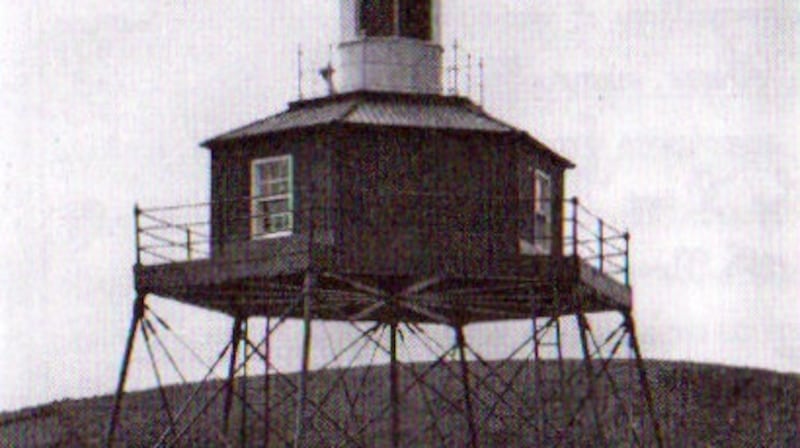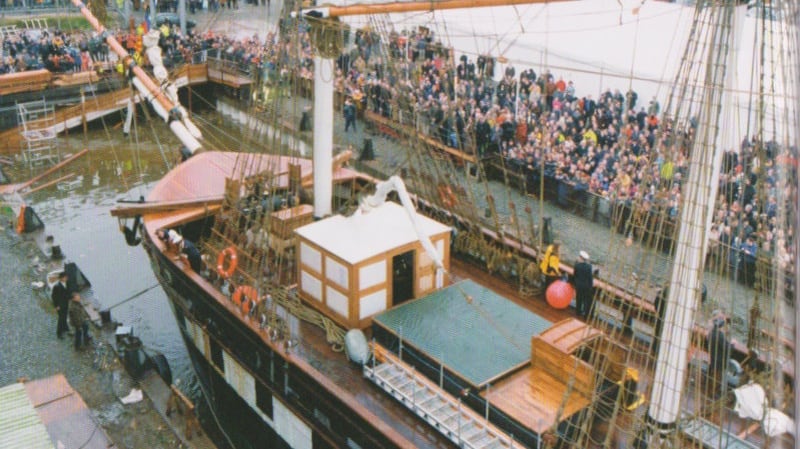The seafaring tradition of the southeast is brought to life with studies of Waterford port and harbour and the saga of the Dunbrody ship in Wexford.
Waterford Harbour: Tides and Tales (History Press, €12.99) by Andrew Doherty, delves into stories of smuggling, banshees and pirates. A fisherman for many years, the author is steeped in the sea, and has benefitted from the passing on of local lore, known in Irish as Ó Ghlúin go Glúin, or "from knee to knee".
As a boy he loved the Spit Light, marking the sandbank called “the Spit”, its shape in the water reminding him of a gigantic house spider with long spindly legs. His range embraces packet boats and paddle steamers, dredgers and hobblers (boatmen who looked after essentials) as well as placenames and landmarks such as the mysterious “Buttermilk Castle”, a formidable lump of rock with a crown of pine trees jutting over the river “like a brooding citadel above Ballyhack”.

A contrasting insight into the same port but focusing on a specific period is outlined in Waterford Port and Harbour, 1815-42 (Four Courts Press, €9.99) by Mary Breen in the Maynooth Studies series. Tracing the development of the port, it shows how its relationship with Waterford Corporation under royal charters has been central to the fortunes of the city.
The crucial year of 1816 saw the establishment of the harbour commissioners and the implementing of the Waterford Harbour Act when 30 pilots were appointed. Expansion into shipbuilding, and an increase in trade, gave merchants the confidence to invest in ship ownership, and from 1835 the port experienced a growth in the number and tonnage of registered ships.
West of the city, Dungarvan features in the Irish Historic Towns Atlas, Dungarvan/Dún Garbhán No 30 (Royal Irish Academy, €30) by John Martin, who contributes a survey on the shaping of the coastal town. Part of a wider European scheme, the IHTA was established 40 years ago. The atlas is replete with topographical information on the built fabric of the town and harbour, and a breakdown of streets from Bakehouse Lane to Youghal Road.
Descriptions of the manufacturers in the 19th century provide a snapshot of working life – there were more than 40 forges and smithies and 24 cooperages, as well as a thriving millinery trade boasting no fewer than 14 hat-makers. Twenty large-format A3 loose sheet maps, including an intricately digitised colour fold-out from 1841-51 are a cartographer’s delight, along with black-and-white photographic plates from the Lawrence Collection.
Dunbrody: A Famine Odyssey (€20), by Sean Reidy, reveals the vicissitudes involved in building a life-size replica of a 19th-century Famine ship in New Ross. The original Dunbrody, built in 1845 in Quebec, was a 458-ton, three-masted, timber barque. The complex multimillion pound/euro project, which took five years to build, was bedevilled with problems and frustrations, not least in funding such an ambitious enterprise which eventually ran out of money.
The Kennedy connection was vital. John F Kennedy’s great-grandfather was born near Dunganstown in 1823, and the link helped secure more funding. As chief executie of the JFK Trust, the author dedicated many years to pushing the scheme forward.
While the ups and downs of the funding were finally overcome with additional support from the government and other agencies, a major unforeseen problem arose when it emerged that the Jeanie Johnston Famine ship was being planned in Tralee which impacted on the Dunbrody fundraising. This provoked Loretta Brennan Glucksman, chair of the Ireland Funds, to query in exasperation: “Why are there two Famine ships being built at the same time? This could only happen in Ireland."

Reidy’s lively text about overcoming adversity is accompanied by colour photographs recording the project from its inception to conclusion, where it is now an attraction along with a heritage centre.
Two photographic books stir memories from separate parts of the country. Strandhill: An Illustrated History (Eastwood Books, €16.99), by Peigín Doyle, takes readers back through the generations with images of the much-loved northwest coastal village focusing on the decades long before the marketing of the Wild Atlantic Way. Many images are from families who have lived in the area for several generations. One from 100 years ago demonstrates the enduring popularity of Maeve's Cairn, a Neolithic passage grave on Knocknarea, with a group of people standing on it – something not permitted today.
The second book looks through the historic lens at a visual history of Portlaoise, concentrating on business, health, education, religion and law and order in the 20th century. Historian Joe Curtis has assembled an evocative selection of black-and-white images in Portlaoise: An Illustrated History (Eastwood Books, €16.99).
Burncourt: A History (Eastwood Books, €16.99), by Rose Cleary, explains how a rural parish at the foot of the Galtee mountains in Co Tipperary can shape a community and the spirit of a place. The book's wide parameters stretch from early history up to the 1930s showing that the county was always a volatile region, prone to rebellion.
One of many absorbing stories is of Kit Conway, who fought with the volunteers during the War of Independence and on the anti-Treaty side in the final year of the Irish Civil War. In 1936 he signed up to fight on the Republican side in the Spanish civil war and was killed on February 12th, 1937, at the Battle of Jarama, east of Madrid. A memorial to Conway was unveiled in Burncourt in June 2005, while a version of The Galtee Mountain Boy by Manus O’Riordan pays homage to his memory.










